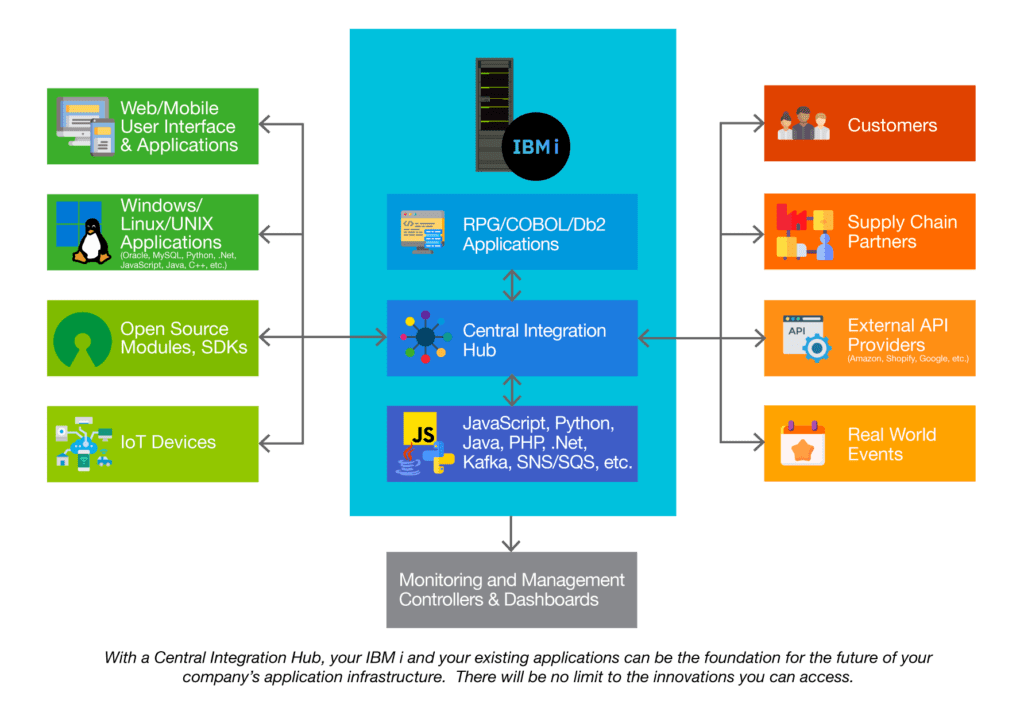More Than APIs
Every day, I speak with IBM i users with new and interesting use cases for connecting their IBM i systems to help their businesses increase revenue, reduce costs, and better serve their customers. Some are integrating applications across multiple platforms within their organizations, replacing expensive, batch-oriented technologies like FTP/SFTP and EDI to automate connections with their customers and partners. Others are connecting to new potential revenue streams via sites like Amazon, Shopify, and eBay, while some are simply adding Open Source modules to speed up their development process. One thing they all share is that they are looking for an integration “hub” that will make it easy to connect these new technologies to their IBM i.
The good news is that just about all these integrations have many components in common. They all generally need the following:
- Translations between the Open Source and the IBM i way of calling programs and accessing tables
- Transformations between IBM i data formats and open data formats
- Authentication and authorization
- Systems for monitoring and managing the connections
These basic functions can all be provided in a single central integration hub.
What to Look for in a Central Integration Hub?
A central integration hub must offer a range of tools and techniques, including high-performance APIs, event-driven architecture, message-oriented middleware, and Open Source module support, among others. In addition, the platform should provide users with a set of pre-built connectors and templates that can be easily customized to fit specific integration needs. These connectors should support a wide range of protocols and formats, including REST, SOAP, JSON, XML, ODBC, FTP/SFTP, MQTT, Kafka, and others, to ensure compatibility with various applications and systems.

Another vital feature is the ability to perform data mapping and transformation between IBM i formats and open formats. This is essential for ensuring seamless communication between the unstructured open environment and the highly structured, unique IBM i environment.
The integration platform must offer robust authentication and authorization mechanisms and support secure communication protocols such as HTTPS, TLS, and SSH to ensure security and compliance. You should look for encrypted token support and OAuth2 support, single sign-on support like Active Directory integration, KERBEROS, SAML, and other popular technologies. This is especially important when integrating with external systems and partners.
Are you starting to think about using AI to enhance your applications? If so, a great place to start is by providing the AI learning engines with access to your data and functions via a standard interface. The integration hub can provide that as well.
Finally, the integration platform should provide users with comprehensive monitoring and management tools, including real-time alerts and dashboards, to ensure that all connections and integrations are functioning correctly and efficiently.
Why You Need a Central Integration Hub
By adopting a comprehensive integration platform, IBM i users can leverage the full power of their systems and applications by leveraging machine-to-machine communication for existing integrations and seamlessly connecting with new technologies and platforms. This can increase revenue, reduce costs, and improve customer satisfaction, helping businesses stay competitive in today’s fast-paced digital landscape. If you want to learn more about implementing an Integration Hub for your IBM i, give us a shout!

